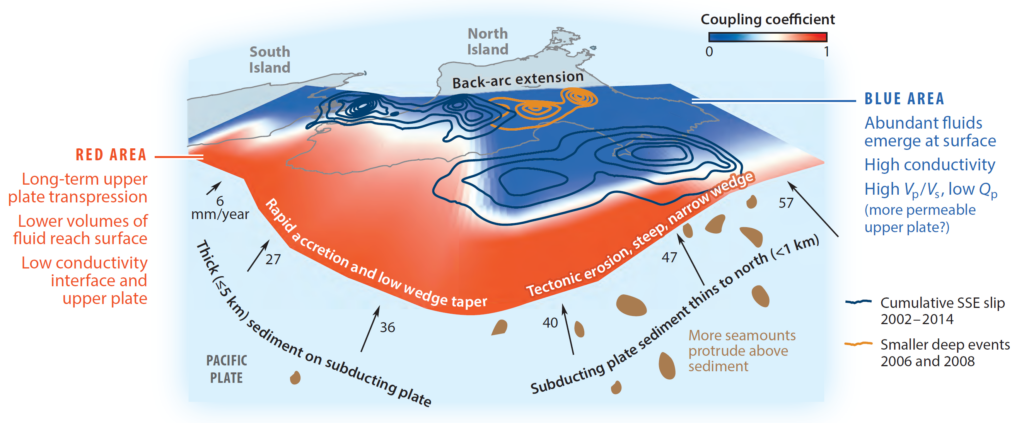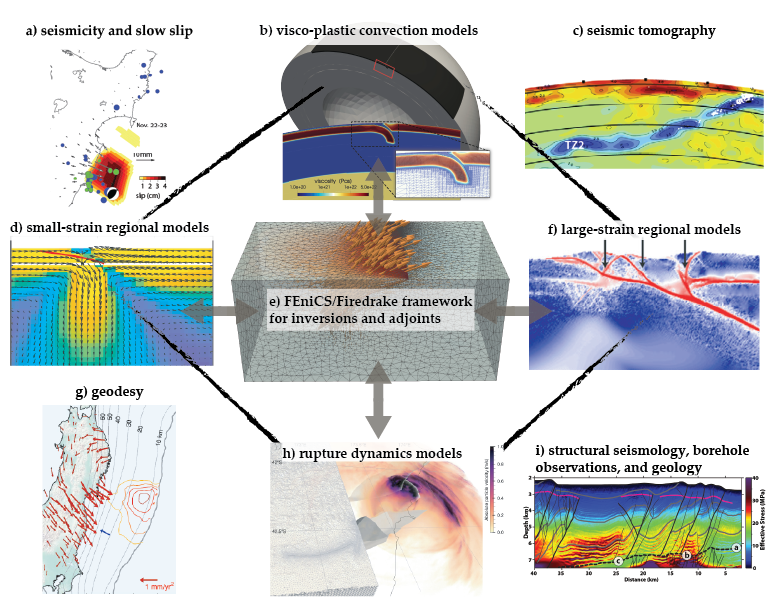Subduction zones, where tectonic plates are recycled back into the mantle as in the Cascadia margin of the Pacific Northwest of the United States, host the largest earthquakes and give rise to significant hazard through ground shaking, landslides, and tsunami. This project seeks to better utilize existing geophysical and geological observations from important “natural laboratories” (Cascadia, Japan and New Zealand) by merging them more fully into new, comparative computer models of system behavior.

Developing new modeling software and integrating constraints is expected to lead to new insights into the physics of subduction zone earthquakes, what observations imply for future earthquakes, and, importantly, which observations are needed to improve our understanding of subduction zone hazards and how to reduce uncertainties about system behavior. The project will involve international collaborations, leverage past investments, and will contribute to defining future, optimal observational strategies. An interdisciplinary workforce of students and post-docs will be trained through research and educational efforts, and all project software, tutorials and “cookbooks” for subduction earthquake modeling will be shared with the community, contributing to advancing computational geoscience approaches in general. A program for precollege, undergrad, and early grad students will be developed to emphasize computational geoscience as an avenue to enhance diversity in the geosciences.

